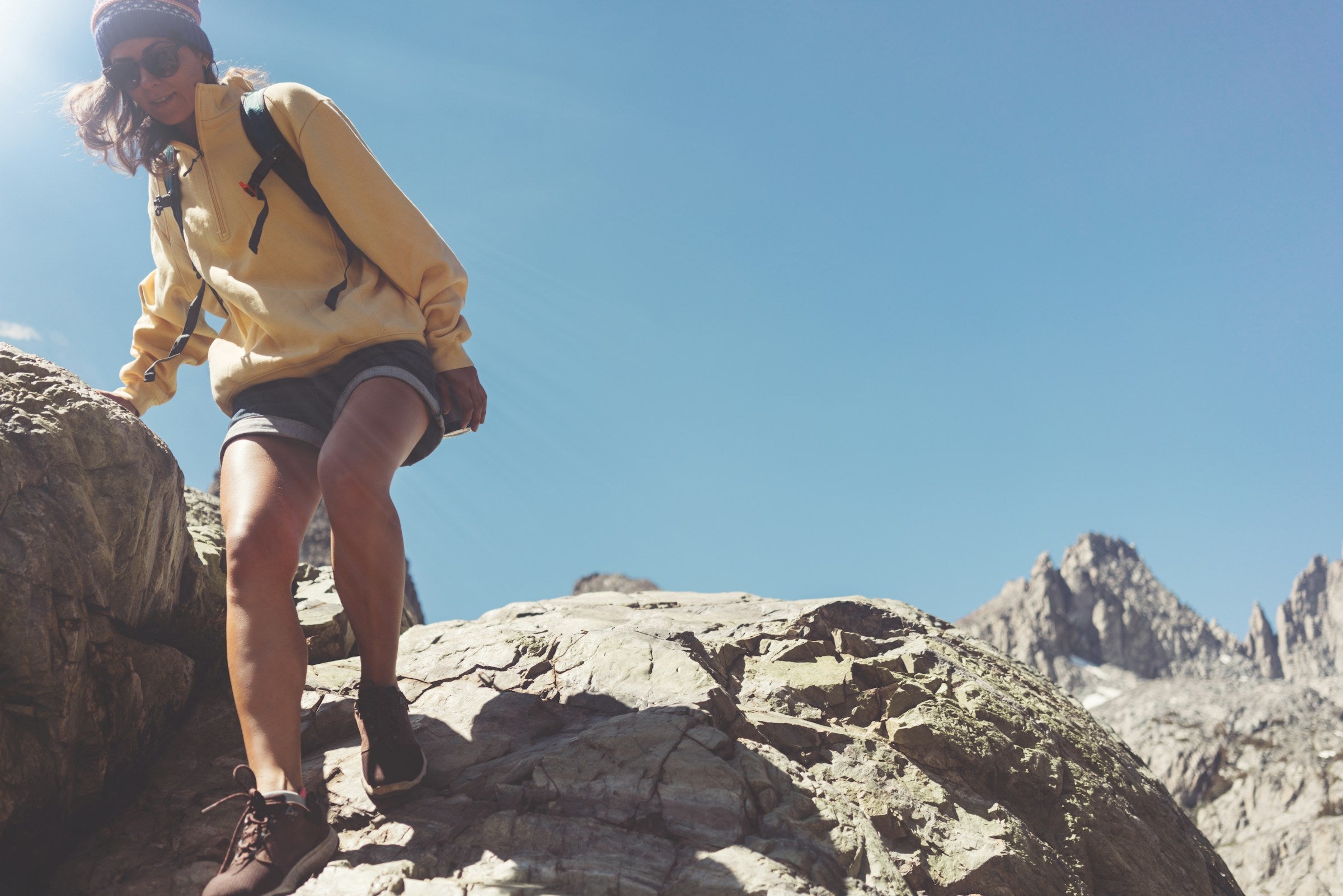
Clothing for Hiking
Essential Clothing Layers for Any Hike: A Complete Guide
Introduction
When it comes to hiking, choosing the right clothing is just as important as picking the right trail. Weather conditions can change rapidly, and being prepared with proper layering ensures comfort, safety, and protection against the elements.
The key to staying warm, dry, and comfortable on the trail is layering your clothing effectively. The layering system consists of three main components:
- Base Layer (Moisture-Wicking)
- Mid Layer (Insulation)
- Outer Layer (Weather Protection)
Each layer serves a different function, and when combined correctly, they regulate body temperature, wick sweat, and shield against wind, rain, or snow.
In this guide, we’ll break down each layer, how to choose the best materials, and why layering is crucial for any hike—whether it’s a summer day hike or a winter expedition.
1. The Base Layer: Moisture Management
Purpose:
The base layer is worn closest to the skin and is responsible for wicking sweat away from your body to keep you dry and comfortable.
Best Base Layer Materials:
✔️ Merino Wool: Natural, moisture-wicking, odor-resistant, and great for both hot and cold weather.
✔️ Synthetic Fabrics (Polyester, Nylon): Lightweight, quick-drying, and affordable.
❌ Avoid Cotton! It absorbs moisture and takes forever to dry, leading to chilling in cold weather.
Base Layer Recommendations by Season:
🌞 Warm Weather: A lightweight, short-sleeve moisture-wicking shirt.
❄️ Cold Weather: A long-sleeve merino wool or synthetic thermal shirt.
Base Layer Clothing Examples:
- Summer: Patagonia Capilene Cool Lightweight Shirt
- Winter: Icebreaker Merino 200 Base Layer
Pro Tip: Your base layer should fit snug but not too tight, allowing efficient moisture transfer.
2. The Mid Layer: Insulation for Warmth
Purpose:
The mid layer traps body heat to keep you warm. It should be breathable to allow moisture to escape while maintaining warmth.
Best Mid Layer Materials:
✔️ Fleece: Lightweight, breathable, and warm even when damp.
✔️ Down Insulation: Extremely warm and packable, but loses effectiveness when wet.
✔️ Synthetic Insulation (Primaloft, Polartec Alpha): Water-resistant and quick-drying, great for wet conditions.
Choosing the Right Mid Layer:
🔥 Mild Conditions: A light fleece jacket (e.g., The North Face TKA Glacier).
🌨️ Cold Conditions: A down or synthetic insulated jacket (e.g., Patagonia Nano Puff or Arc'teryx Cerium LT).
Mid Layer Clothing Examples:
- Cool Weather: Columbia Steens Mountain Fleece Jacket
- Cold Weather: Arc'teryx Atom LT Hoody (synthetic) or Patagonia Down Sweater
Pro Tip: If you expect rain or snow, choose synthetic insulation over down, as it retains warmth even when wet.
3. The Outer Layer: Protection Against the Elements
Purpose:
The outer layer (shell) shields against wind, rain, and snow, keeping your other layers dry and functional.
Types of Outer Layers:
-
Hardshell Jackets (Waterproof & Breathable)
✔️ Made from GORE-TEX, eVent, or similar materials.
✔️ Ideal for rainy, snowy, or extremely windy conditions.
✔️ Example: Arc'teryx Beta LT Jacket. -
Softshell Jackets (Water-Resistant & Breathable)
✔️ Best for light rain, wind, or high-output activities.
✔️ More flexible and breathable than hardshells.
✔️ Example: Outdoor Research Ferrosi Jacket. -
Windbreakers (Lightweight & Packable)
✔️ Best for light wind and mild conditions.
✔️ Ultra-lightweight and easy to pack.
✔️ Example: Patagonia Houdini Wind Jacket.
Choosing the Right Outer Layer:
☔ Rainy Hikes: A waterproof rain jacket with pit zips for ventilation.
🌬️ Windy Trails: A lightweight windbreaker or softshell jacket.
❄️ Winter Hiking: A fully waterproof GORE-TEX hardshell to protect against snow.
4. Additional Layers for Different Conditions
In certain conditions, additional layers enhance comfort and safety.
4.1 Insulated Pants for Cold Weather
✔️ Fleece or insulated hiking pants for winter trekking.
✔️ Example: REI Co-op Activator Softshell Pants.
4.2 Rain Pants for Wet Conditions
✔️ Waterproof pants (e.g., Outdoor Research Helium Rain Pants) for heavy rain.
4.3 Gaiters for Snow or Mud
✔️ Protects boots and lower legs from snow, mud, and debris.
✔️ Example: Outdoor Research Crocodile Gaiters.
5. Layering for Different Seasons & Climates
5.1 Summer Hiking Layers
✅ Base Layer: Lightweight synthetic or merino wool t-shirt.
✅ Mid Layer: Thin fleece or windbreaker (optional).
✅ Outer Layer: Lightweight rain jacket for unexpected storms.
Tip: Wear breathable, UV-protective clothing to prevent sunburn.
5.2 Fall & Spring Hiking Layers
✅ Base Layer: Long-sleeve moisture-wicking shirt.
✅ Mid Layer: Fleece jacket for warmth.
✅ Outer Layer: Waterproof rain jacket for unpredictable weather.
Tip: Always bring a beanie and gloves, as temperatures can drop unexpectedly.
5.3 Winter Hiking Layers
✅ Base Layer: Heavyweight merino wool or synthetic thermal.
✅ Mid Layer: Insulated down or synthetic puffy jacket.
✅ Outer Layer: GORE-TEX or waterproof hardshell jacket.
✅ Accessories: Warm gloves, hat, gaiters, and wool socks.
Tip: Always bring an extra pair of gloves and socks in case they get wet.
6. Tips for Effective Layering on Any Hike
✔️ Adjust Layers as You Go
- Remove layers when you start sweating.
- Add layers when you feel a chill.
✔️ Ventilation is Key
- Use pit zips, mesh vents, and breathable fabrics to prevent overheating.
✔️ Keep Dry at All Costs
- Always carry a waterproof layer, even if the forecast looks clear.
- Change sweaty base layers immediately in cold weather.
✔️ Avoid Overpacking
- Bring only what you need based on the season and expected weather.
Final Thoughts
Having the right clothing layers can make or break your hiking experience. Whether you’re hiking in hot sun, freezing cold, or rainy conditions, the right layering system keeps you comfortable, dry, and safe.
Key Takeaways:
✅ Base Layer: Wicks moisture and keeps you dry.
✅ Mid Layer: Traps body heat for insulation.
✅ Outer Layer: Shields against wind, rain, and snow.
✅ Adjust layers based on weather conditions and activity levels.
By following these layering principles, you’ll be ready for any hike—no matter the season or terrain. Stay comfortable, stay safe, and happy hiking!
